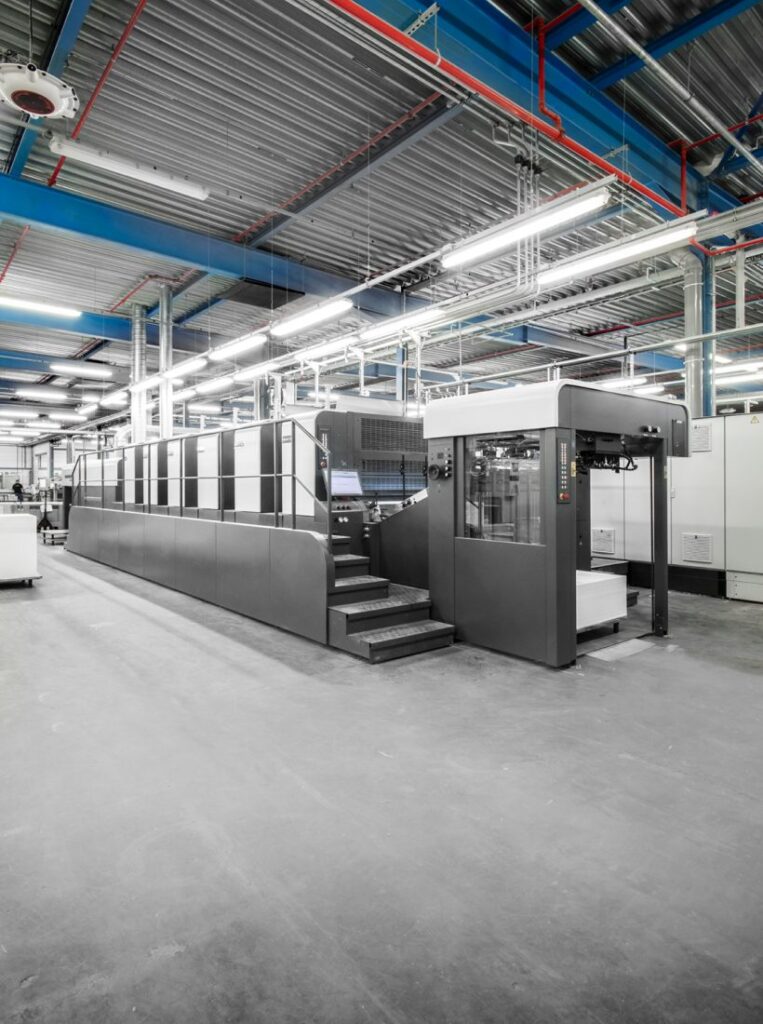NEWS
Why die Keure chooses conventional offset technology

LED UV and new digital technology are booming in the graphic industry. This is understandable, because both offer a number of advantages in terms of production. Then why does die Keure stick to traditional offset printing? We are happy to explain.
Ecological Considerations
As a publisher and printing company, die Keure is committed to working in a sustainable and environmentally friendly manner along the entire production chain. Our goal: to become a climate neutral company. To put it in the words of our CEO:
“You only become (or are) a climate neutral company if, at the end of the journey, the environment is not affected by your company – or ultimately; it benefits from your presence. Therefore, efforts must be consistent and on a much broader scale than just the use of paper from responsibly managed forests.” – Alexis Bogaert
The main reason why we remain faithful to conventional offset printing is mainly based on ecological considerations.
The main advantages of LED UV printing, for example, are:
- instant curing: the ink dries in seconds
- faster processing and increased productivity
- less ink and energy consumption
Every medal has its reverse. LED UV curing technology uses highly reactive inks. After exposure to a UV or LED UV light source, polymerisation of the monomers occurs, causing the inks to cure immediately. However, certain ink residues (monomers) always remain on the substrate, which are harmful to the human body.
Paper printed with LED UV inks is not recyclable, because the inks are difficult to separate from their carrier. As a result, residues end up in the paper circuit. The polymers, but also the aforementioned toxic monomers. And the greater the share of that paper in the market, the greater the impact. Today, there are LED UV inks on the market that should be slightly better suited for the de-inking process, but research shows that de-inking remains rather problematic in reality. Specifically, it concerns stains on the paper, the so-called dirt speck area. As a result, you can never achieve the same whiteness as the original paper. Conventional printing presses, however, can provide the same result after recycling.
Well-considered choices
Our goal is to reduce our ecological footprint to a minimum. Even though LED UV technology offers many advantages, producing in a sustainable and ecological way remains our priority. That’s why we make maximum use of energy from sustainable sources. Our presses are fully powered by green electricity from solar and wind energy. The share of green energy currently amounts to 96% of the total energy consumption of die Keure. The target is to increase it to 100% by 2022. 30% of that total green energy demand is generated on the company site itself, which we want to increase to 50%. That way, we go one step further than the reduced energy consumption associated with UV printing.
Using new, more oxidative inks, we can equal faster processing and less ink transfers, and print super sharp. In addition, a ‘smart layout’ plays an important role (see also the dossier on binding techniques in our Masters of Art magazine). And we achieve freshness, saturation, and high contrast in imagery through our experience in lithography and extensive color management.